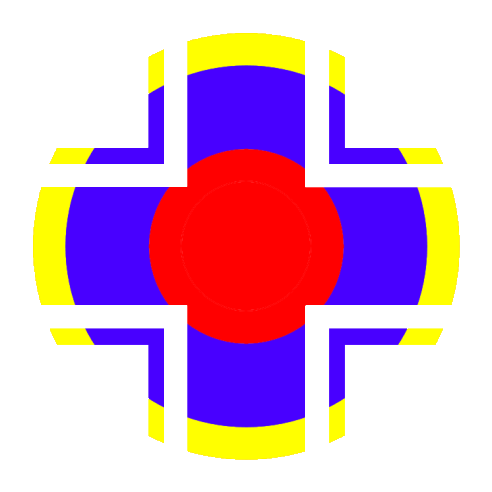(Changes) Tag: sourceedit |
(Infobox added) |
||
| Line 1: | Line 1: | ||
| + | {{Airframe info |
||
| ⚫ | |||
| + | |name='''''{{PAGENAME}}''''' |
||
| ⚫ | |||
| ⚫ | |||
| − | |||
| + | |caption= |
||
| + | |designation=[[:Category:Focke-Wulf Fw 190|Focke-Wulf Fw 190]] |
||
| ⚫ | |||
| + | }} |
||
=History= |
=History= |
||
Built by Arado at Warnemünde,<ref>http://fw190.hobbyvista.com/werkn.htm</ref> Werk Nr 580967 was captured by the Soviet Union in Feb 1945, and test flown at NII-VVS in the USSR, before being used for special trials conducted by the Soviet Air Forces Scientific Research Institute, alongside '''[[Werk Nr 682011]],''' with both aircraft being flown against Yak-3, Yak-9u and La-7 fighters. The engagements demonstrated that new tactical procedures were needed to counter German aircraft flying at low levels, as the Focke-Wulfs usually ingressed at low altitudes and regressed at treetop level at maximum speed, making it hard to counter-attack in time. The pursuit became more complicated because the gray matte paint concealed the German aircraft against the background of the landscape. {{#tag: ref|Based on test results, the institute leadership issued recommendations: it is necessary to echelon the fighters in patrols at different altitudes. The mission of the pilots on the higher tiers would be to disrupt the bombing and to attack the enemy fighter escort, while the lower patrol aircraft, having the capability to overtake in a shallow dive, probably would be able to intercept the ground-attack aircraft themselves.<ref>{{Luftwaffe Warplane Survivors}}</ref>|group="N"}} |
Built by Arado at Warnemünde,<ref>http://fw190.hobbyvista.com/werkn.htm</ref> Werk Nr 580967 was captured by the Soviet Union in Feb 1945, and test flown at NII-VVS in the USSR, before being used for special trials conducted by the Soviet Air Forces Scientific Research Institute, alongside '''[[Werk Nr 682011]],''' with both aircraft being flown against Yak-3, Yak-9u and La-7 fighters. The engagements demonstrated that new tactical procedures were needed to counter German aircraft flying at low levels, as the Focke-Wulfs usually ingressed at low altitudes and regressed at treetop level at maximum speed, making it hard to counter-attack in time. The pursuit became more complicated because the gray matte paint concealed the German aircraft against the background of the landscape. {{#tag: ref|Based on test results, the institute leadership issued recommendations: it is necessary to echelon the fighters in patrols at different altitudes. The mission of the pilots on the higher tiers would be to disrupt the bombing and to attack the enemy fighter escort, while the lower patrol aircraft, having the capability to overtake in a shallow dive, probably would be able to intercept the ground-attack aircraft themselves.<ref>{{Luftwaffe Warplane Survivors}}</ref>|group="N"}} |
||
| + | |||
| + | The aircraft was presumably scrapped, as it is not listed among surviving examples.<ref>https://en.wikipedia.org/wiki/List_of_surviving_Focke-Wulf_Fw_190s</ref> |
||
=Notes= |
=Notes= |
||
<references group="N"/> |
<references group="N"/> |
||
Latest revision as of 15:09, 24 September 2017
History[]
Built by Arado at Warnemünde,[1] Werk Nr 580967 was captured by the Soviet Union in Feb 1945, and test flown at NII-VVS in the USSR, before being used for special trials conducted by the Soviet Air Forces Scientific Research Institute, alongside Werk Nr 682011, with both aircraft being flown against Yak-3, Yak-9u and La-7 fighters. The engagements demonstrated that new tactical procedures were needed to counter German aircraft flying at low levels, as the Focke-Wulfs usually ingressed at low altitudes and regressed at treetop level at maximum speed, making it hard to counter-attack in time. The pursuit became more complicated because the gray matte paint concealed the German aircraft against the background of the landscape. [N 2]
The aircraft was presumably scrapped, as it is not listed among surviving examples.[3]
Notes[]
- ↑ Luftwaffe Warplane Survivors describes this aircraft as a 190A-8.
- ↑ Based on test results, the institute leadership issued recommendations: it is necessary to echelon the fighters in patrols at different altitudes. The mission of the pilots on the higher tiers would be to disrupt the bombing and to attack the enemy fighter escort, while the lower patrol aircraft, having the capability to overtake in a shallow dive, probably would be able to intercept the ground-attack aircraft themselves.[2]
